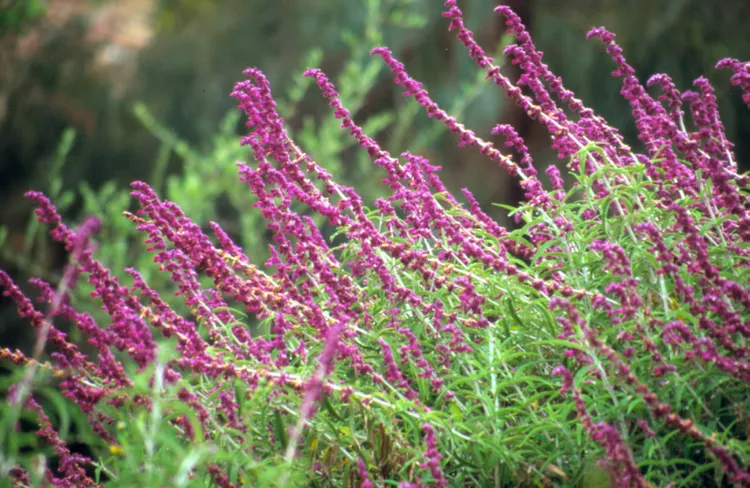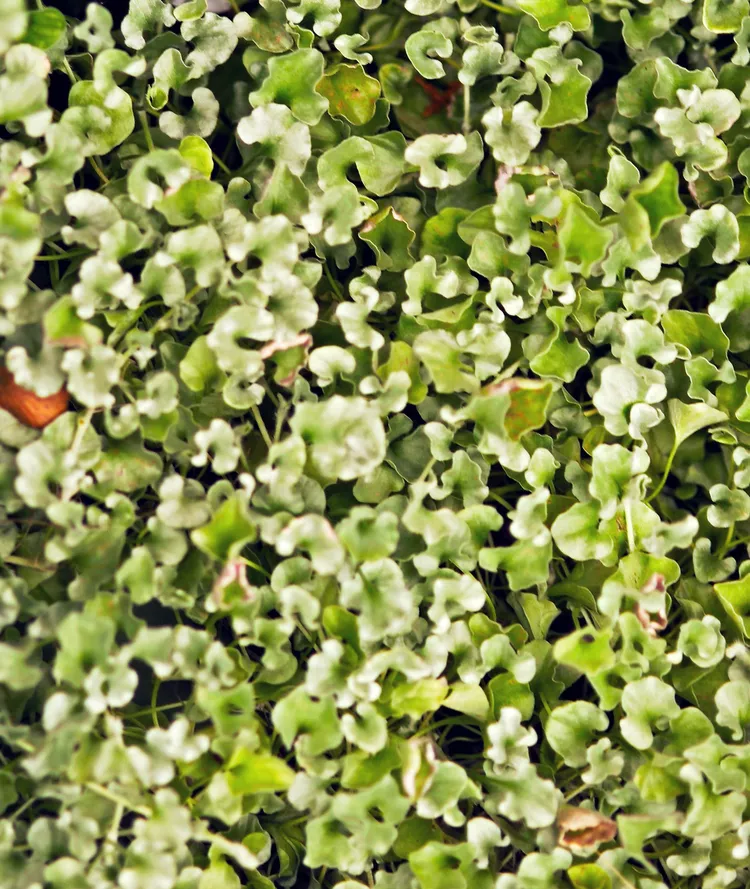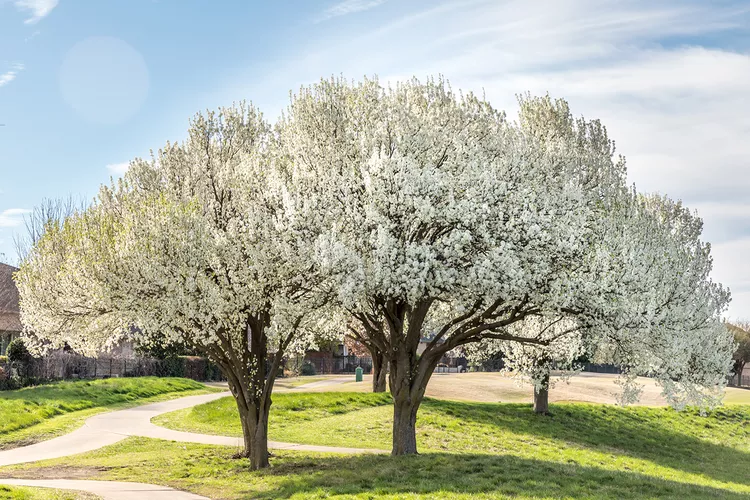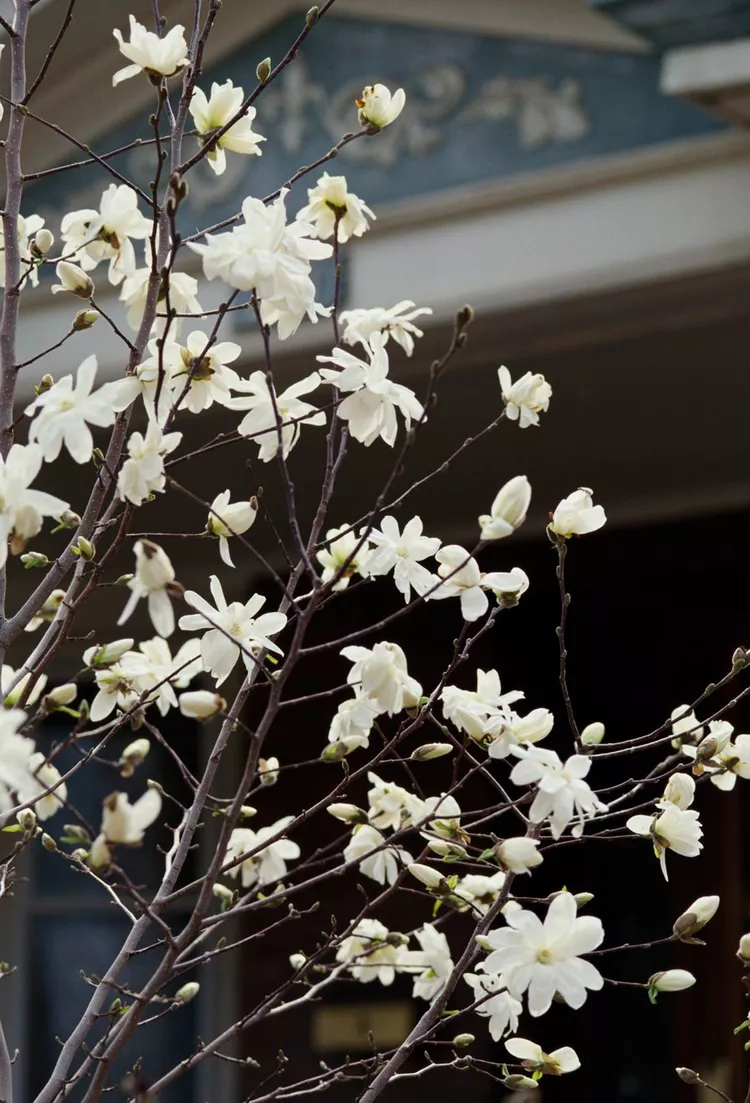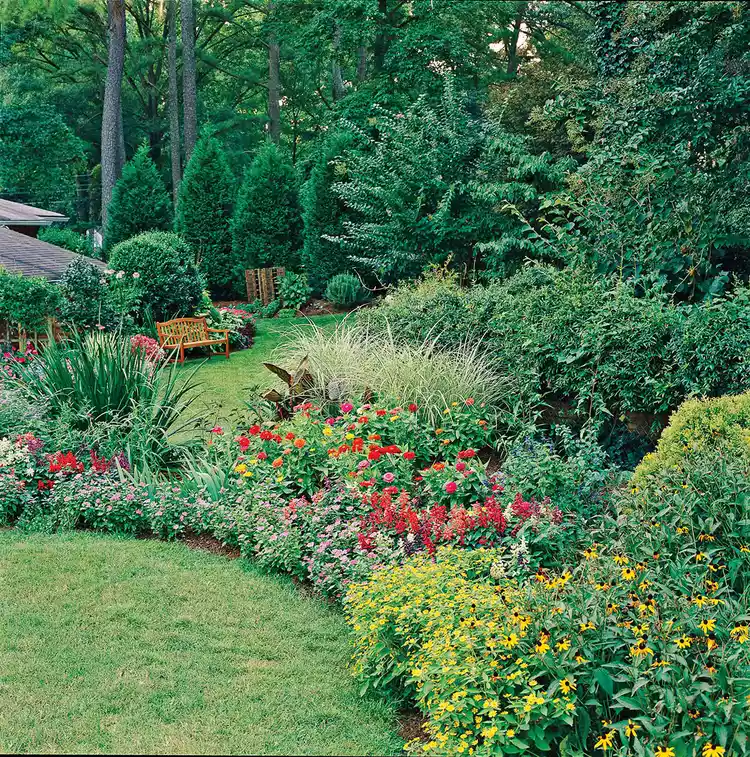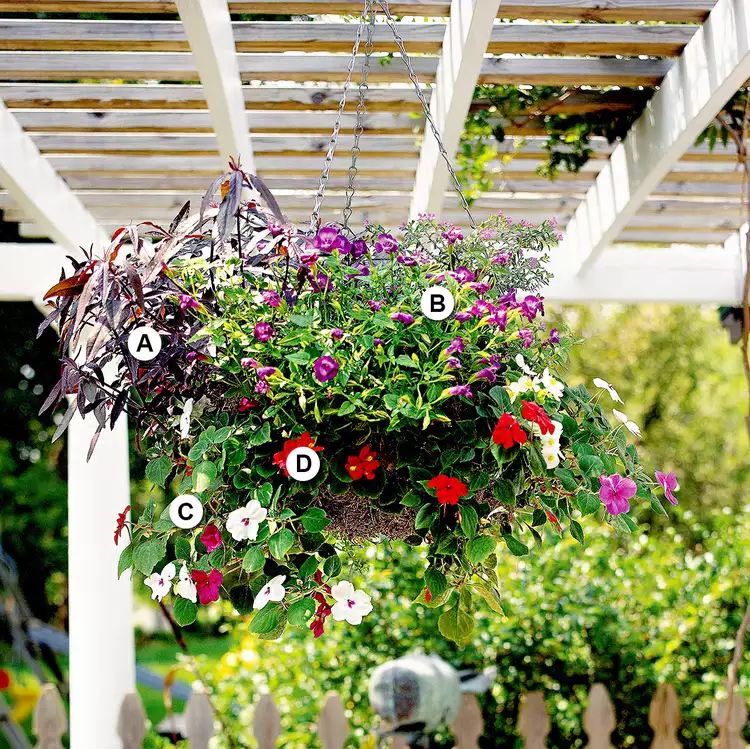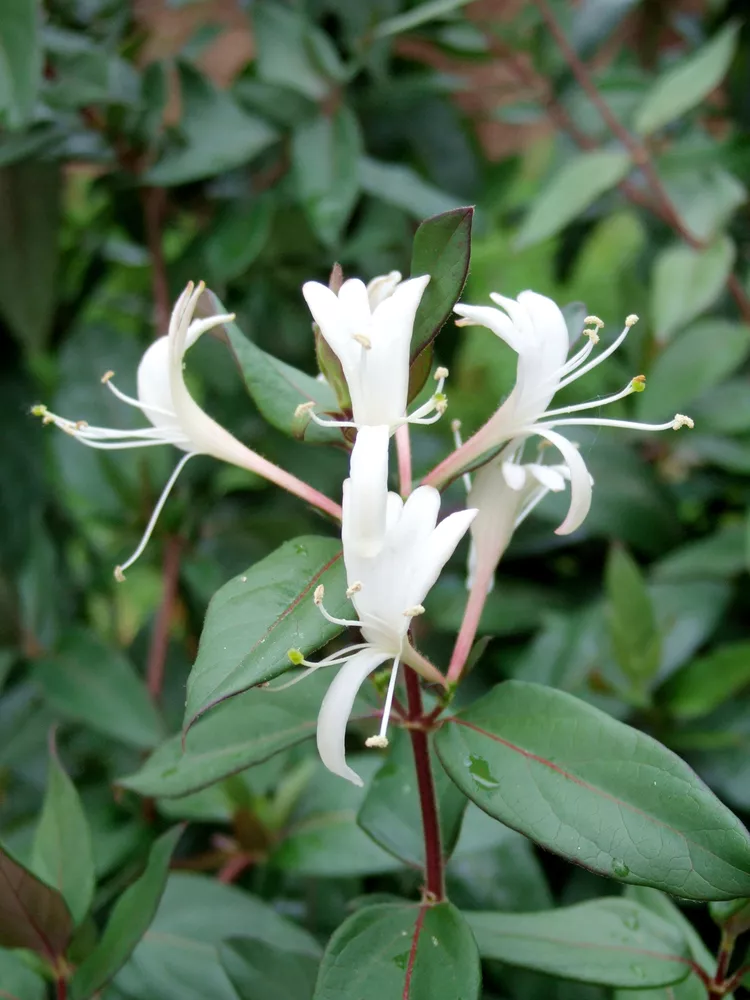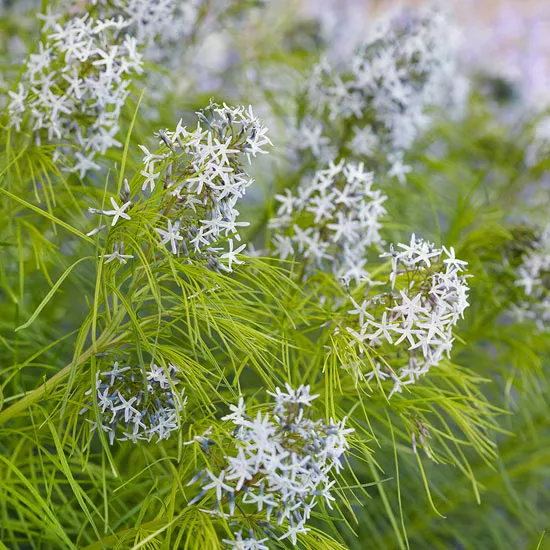
Black chokeberry (Aronia melanocarpa) is native in eastern Canada to the Midwest and south to Tennessee and Georgia. The tart black berries of this shrub provide a food source for wildlife. The antioxidant-rich fruit also can be be enjoyed by people, usually in jams and jellies. Showy white flowers with pink stamens bloom in the spring, and glossy green foliage turns a brilliant red-to-burgundy fall color contrasting with the black berries. Use this guide to grow black chokeberry in your yard.
Black Chokeberry Overview
| Genus Name | Aronia |
| Common Name | Black Chokeberry |
| Plant Type | Shrub |
| Light | Part Sun, Sun |
| Height | 4 to 10 feet |
| Width | 2 to 6 feet |
| Flower Color | White |
| Foliage Color | Blue/Green |
| Season Features | Colorful Fall Foliage, Spring Bloom |
| Special Features | Attracts Birds, Low Maintenance |
| Zones | 3, 4, 5, 6, 7, 8 |
| Propagation | Division, Stem Cuttings |
| Problem Solvers | Deer Resistant |
Where to Plant Black Chokeberry
Plant black chokeberry in average, well-draining soil in an area that receives full or partial sun. Use it in garden beds, hedges, and wildlife gardens in USDA Plant Hardiness Zones 3 to 8. This medium-sized, low-maintenance shrub grows in a rounded, somewhat leggy form and may spread, so remove the root suckers to prevent unwanted growth in garden beds. When planted in a naturalized site, allow the suckers to mature and form a colony. Black chokeberry can withstand wet conditions and be used in rain gardens and along streams and ponds.
When and How to Plant Black Chokeberry
Black chokeberry is a hardy shrub that can be planted whenever the ground is workable and the plants are available. Prepare a bed of well-draining soil amended with compost, and plant the shrub at the same depth it was growing in the nursery container. Backfill the hole, press down with your hands to remove any air pockets, and water the shrub. When planting multiple shrubs, space them 4 to 5 feet apart.
Black Chokeberry Care Tips
Light
Black chokeberry grows best in an area that receives full sun, but it has some tolerance for shade and grows well in partial sun. The best flowering and fruiting occurs in full-sun locations.
Soil and Water
Plant black chokeberry in average, well-draining garden soil. Water regularly during the first year but infrequently after that; much of the water this shrub needs is supplied by rain. In dry areas, see that the plant receives a gallon of water weekly.
Fertilizer
This shrub doesn't require much fertilizer. Add compost to the area when planting black chokeberry and again each spring.
Pruning
Pruning is not usually necessary except to remove dead, damaged, or overgrown branches in winter. Remove a third of the old shoots to the ground after flowering to rejuvenate a landscape shrub. When rejuvenating a fruiting bed, cut off the branches at the base and let the plant grow back. The best fruiting happens on branches younger than seven years.
Potting and Repotting Black Chokeberry
This shrub can be planted in a container, but it requires a large one—at least 20 gallons—with excellent drainage. Fill it with lightweight potting soil mixed with some compost. It isn't a fast grower, so it won't need to be repotted each year.
Pests and Problems
Black chokeberry has no serious insect or disease problems, although aphids might visit. If so, they can be sprayed off with water or treated with neem oil. In humid areas, powdery mildew can become a problem. Keep the garden clean and discard any leaves that display powdery mildew. If the problem persists, treat the shrub with an organic fungicide.
The shrub is deer-resistant, although deer might browse in the spring. Occasionally, they pull newly planted shrubs from the ground and leave them in the garden. The tart, bitter taste repels the deer. Blood meal is somewhat effective at keeping deer away.
How to Propagate Black Chokeberry
Look around a mature black chokeberry shrub to see if its runners have produced new growth (suckers) above ground. If so, use a sharp spade to slice through the sucker root and lift the small plant out of the ground, being careful not to damage any of its roots. Plant it in a new bed and water it well.
Black chokeberry can also be propagated by taking stem cuttings in late summer from softwood or semi-softwood stems. Each cutting should have two to four leaf nodes. Remove the foliage from the bottom half of the cutting, leaving only the topmost leaves; if the leaves are large, cut them in half. Dip the bottom of the cutting in rooting hormone and put the bottom 2 inches into a pot filled with a sterile potting mix with excellent drainage. Mist the cuttings regularly. When new growth appears, the cutting has rooted, and it can be moved to a larger pot or transplanted to the garden.
Types of Black Chokeberry
'Autumn Magic' Black Chokeberry
The fragrant white flowers, large black berries, and fall leaf color of red and purple set Aronia melanocarpa ‘Autumn Magic’ apart. With its smaller size of 3 to 5 feet high and 2 to 4 feet wide, this shrub is a great choice. Zones 3-8
Iroquois Beauty Black Chokeberry
Iroquois Beauty Black Chokeberry (Aronia melanocarpa ‘Morton’) is a compact, dwarf black chokeberry with 3/8 inch black berries. Growing to 4 feet high and wide, it easily fits in average-size gardens. Zones 3-8
'McKenzie' Black Chokeberry
Aronia melanocarpa ‘McKenzie’ is an attractive, upright shrub that typically grows 5-10 feet tall. The white blossoms attract pollinators to the garden in spring, and birds feast on the berries in autumn. Zones 3-8
'Viking' Black Chokeberry
Aronia melanocarpa ‘Viking’ blooms in a mass of white flowers somewhat earlier in the spring than other cultivars. This bee-friendly shrub attracts birds and butterflies to the garden. It grows 4-6 feet tall and wide. Zones 3-8
Black Chokeberry Companion Plants
For a shrub border, choose plants with a similar form but different flower colors or flowering times. Look for contrasting berry and fall leaf colors.
Winterberry
Winterberry holly (lex verticillata) is the rare holly that survives and makes a statement in the colder parts of Zones 3 and 4. The plant, which is adaptable to various soil, light, and moisture conditions, shines in the fall and winter garden with its red berries.
Arrowwood Viburnum
Arrowwood viburnum (Viburnum dentatum) is a native shrub that can grow up to 15 feet tall (for smaller spaces, try Blue Muffin, a variety that gets about half that size). Yellow fall foliage and the blue-black fruit add interest to the landscape.
New



